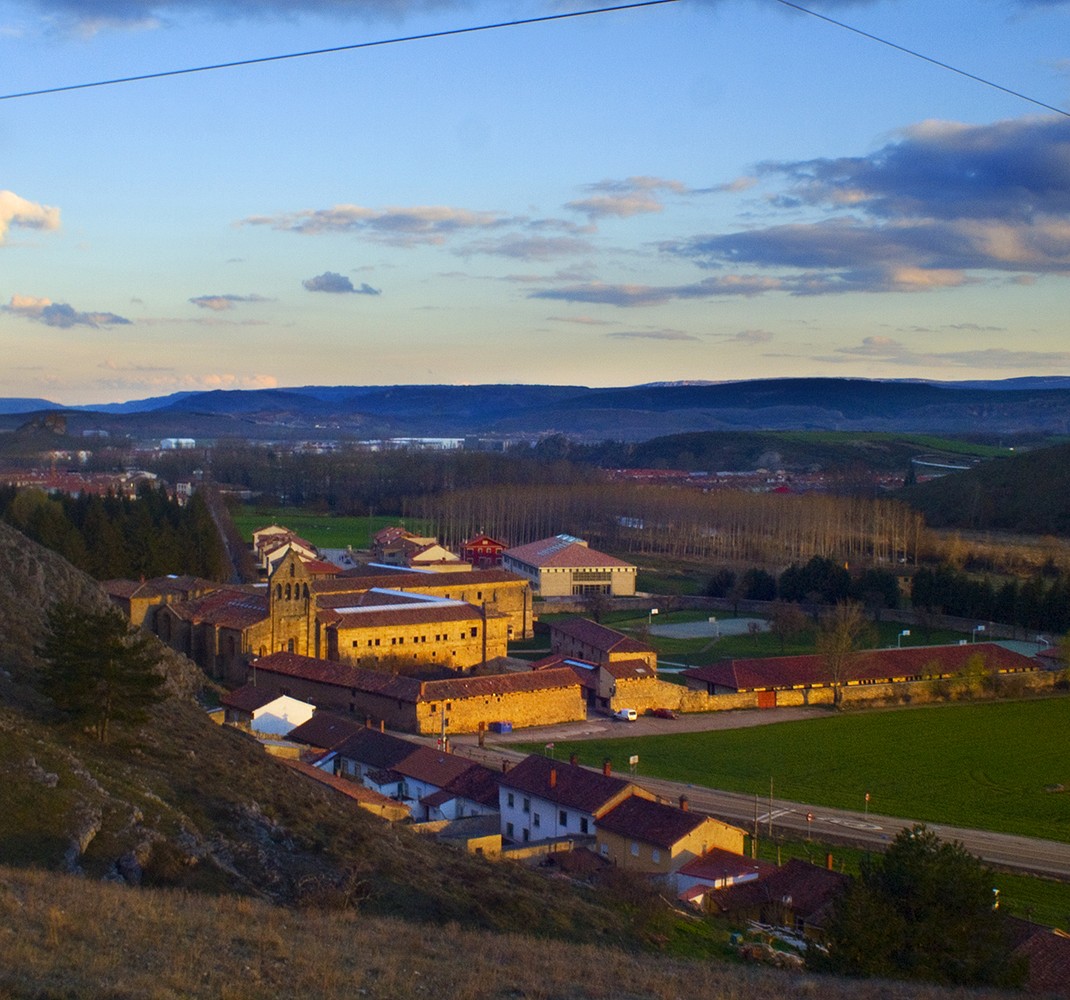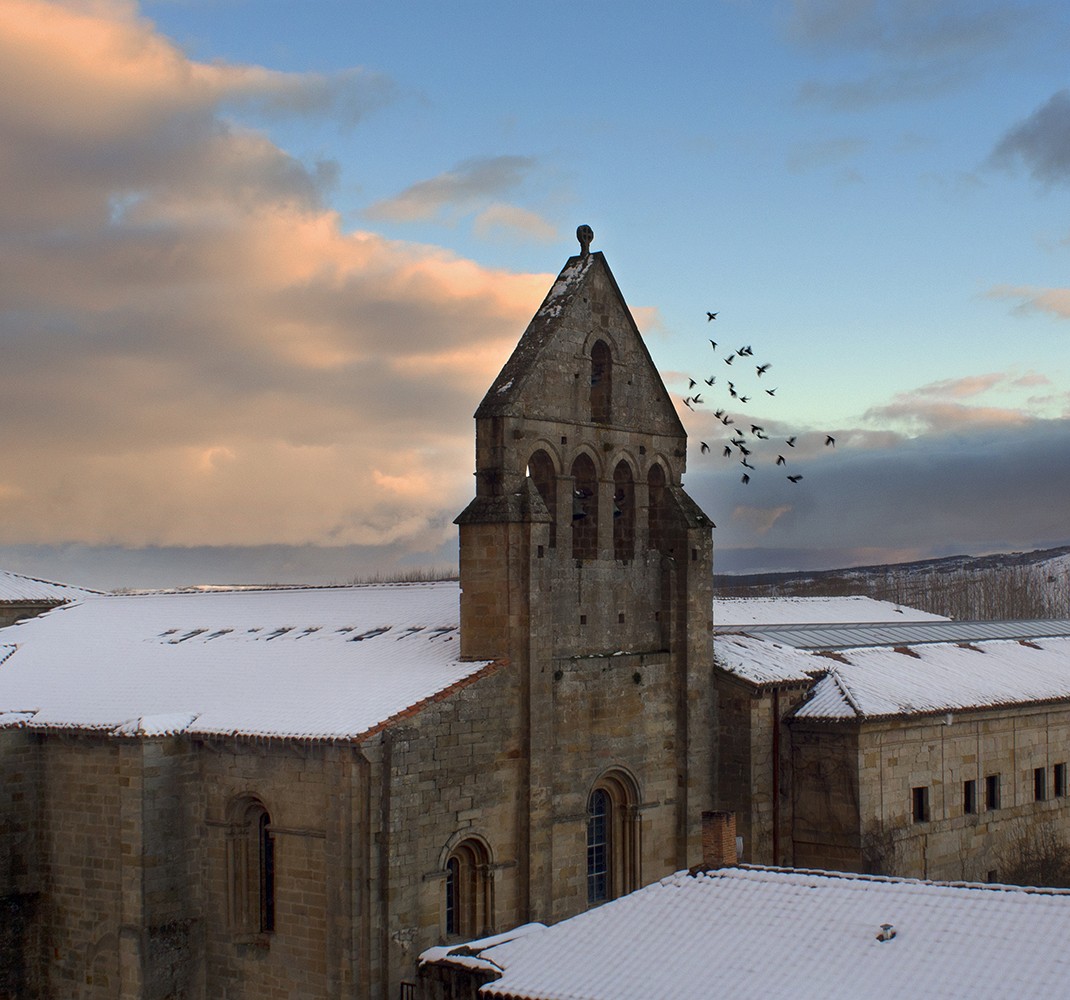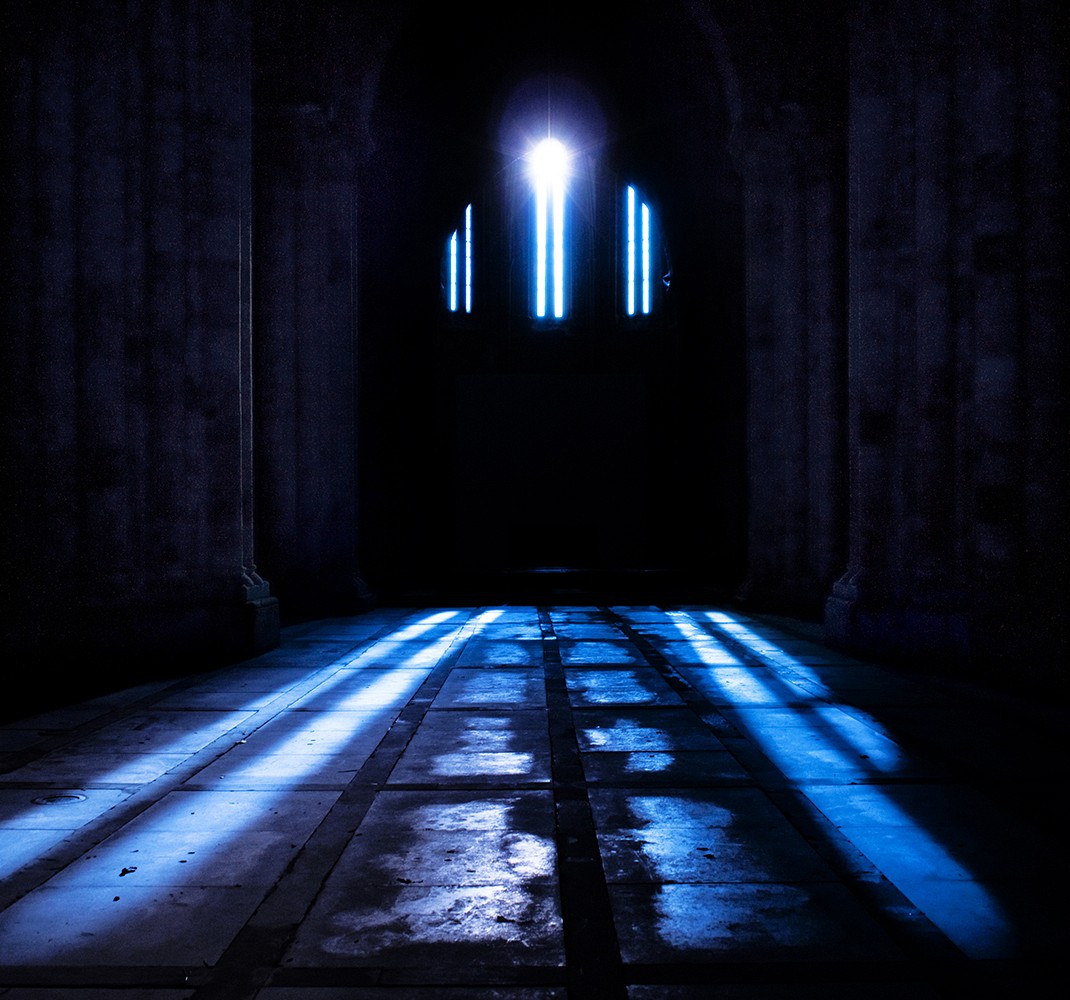Historical introduction of the monastery of Santa María la Real
Romanesque origin with later extensions.
10th century - 19th century.
Location:
Reception Monastery of Santa María la Real.
As a good medieval building with great importance, the origin of our monastery stems from a legend that takes us back to the year 822.
At first there is only one knight named Alpidio who is chasing an elusive wild boar. Crawling in the thicket of the mount, he comes across an abandoned church, which serves as a lair for the beast. Alpidio finds a second temple full of relics and decides to go in search of his brother Opila, abbot of a monastery on the banks of the Ebro, so that he is the one who makes the decision of what to do with his finds. Opila immediately realizes the richness of the place, as a rock acts as a shelter and there is plenty of water, and decides to build a monastery.
Leaving the legends behind, the most important date of the monastery is the year 1169 when King Alfonso VIII handed over, the then monastery of Santa María de Aguilar, to the Premonstratensian order. The golden age begins, its abundant possessions, as well as the large incomes, allow the appearance of an important artistic production and the gestation of the Romanesque monastery.
After centuries of internal changes, privileges and many rebuilds, the decline begins. The monastery will be the victim of the Mendizábal Confiscation. On October 11, 1835, it disappeared as an ecclesiastical institution, leading to abandonment.
Although there was an attempt at restoration in the mid-1960s that sought to remove all post-medieval additions from the building and consolidate the most damaged parts, it was not until the late 1970s when the so-called “Fallen Convent” was reborn. The restoration starts from José María Pérez “Peridis” who, together with friends and neighbors of Aguilar, created the “Friends of the Monastery Association” whose objective was to rehabilitate the monastery, not only to prevent its disappearance but to recover it and give it a new functionality that allow its maintenance.
Thus, in the mid-1980s, before the restoration campaign ended, it began to house a High School, later the Distance University, the Language School and the headquarters of the Santa María la Real Foundation arrived.





